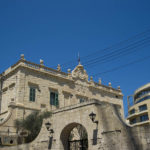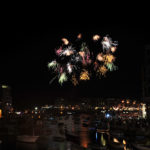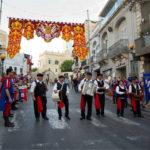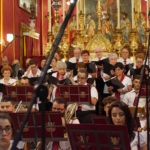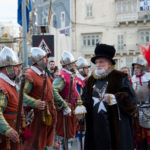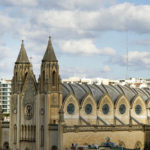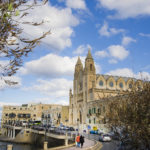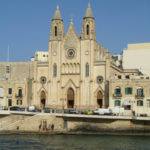
Spinola Palace
Funded by his brother, Marquis Spinola, Fra Paolo Raffaele founded the Abbazia, a palace built on the crest of St Julian’s hill surrounded by sprawling gardens that extended as far as the bay, and that today bears the family name of Spinola Palace.
During the French occupation of Malta in 1798, French troops were stationed within the palace and brought about certain havoc. This also resulted in the unfortunate mutilation of the Order’s emblem atop Spinola Palace’s clock façade.
The Palace was handed over to the British Army in 1860, which in turn renamed it to Forrest Hospital, dedicated to their principal military doctor at the time. The Army soon left the palace after that, but the Royal Army Medical Corps requisitioned it once again during World War I.
Today, Spinola Palace has been restored and stands tall in the heart of our city, however it is not open to the public, with the exception of its cellar, which houses a popular local restaurant.

The Feast of St Julian’s
Almost every town or village in Malta is dedicated to a patron saint, which in turn results in a large religious and outdoor celebration. Locally known as ‘il-festa’, the feast of St Julian’s generally takes place during the last weekend of August, and is of course dedicated to St Julian.
It is said that St Julian was a hunter, and for this reason hunters line up on the rooftop of the church every year and fire blank cartridges loaded with black powder into the air as the statue of St Julian is carried out of the church doors.
During this time the village of St Julian’s is richly decorated with flags, banners, festoons, and colourful outdoor lights and many celebrations are held during this festive week.
In addition, a spectacular fireworks display over Spinola Bay is held by night, generally on a Saturday evening.

Il-Ġostra
The traditional Maltese game of il-ġostra is an activity that has formed an integral part of the feast of St Julian’s since the 1800s. For centuries, spectators would line up on the beach to watch eager competitors run up the 65-foot lard-greased pole.
Said pole is generally mounted at an angle and then covered in around 15 litres of lard. Competitors are then cheered on as they attempt running up the grease pole and catching one of the flags located at the end before falling into the sea.
Participation is exclusively restricted to St Julian’s residents. Those who have volunteered or helped out with the setting up of the village feast decorations in particular.
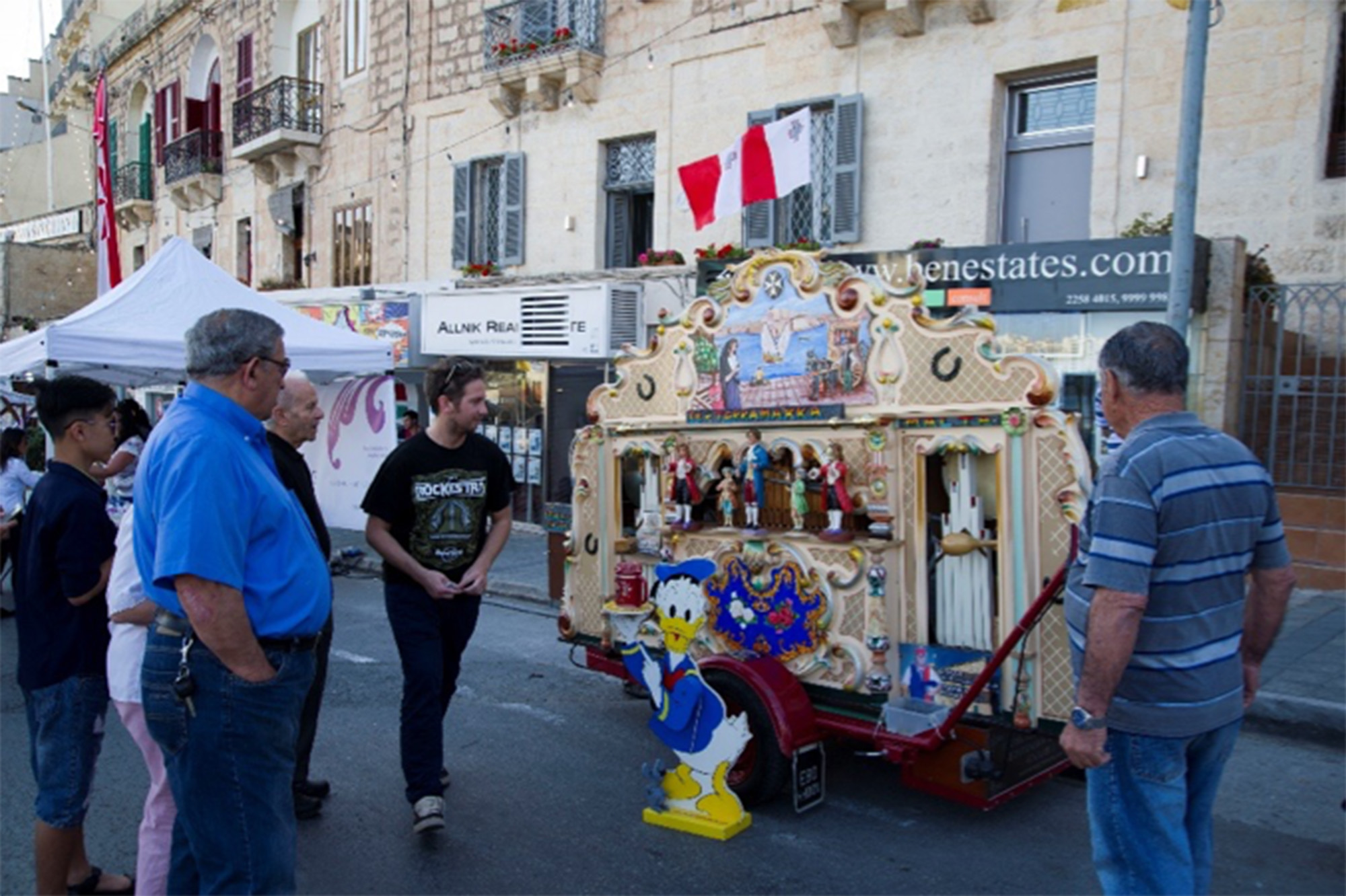
Feast of Lapsi
This smaller village feast is organised by the Lapsi Church in St Julian’s and is generally held towards the beginning of May.
This feast includes a live re-enactment of the Grand Master arriving to the village as it slowly fills up with parades, food stands, local folklore dancing and music. The three band clubs in St Julian’s that include the Associazione Gruppo Tamburi Citta di Giarratana, the Inguardia Group and the Menhir Qala Folk Group provide live music throughout the event.
These marching bands guide their followers from the centre of St Julian’s all the way down to Spinola Bay.
Of course, in true Maltese nature, all festivities are accompanied by a variety of local foods, drinks, an artesian market, a children’s play area, and more recently, a tavern re-enactment.
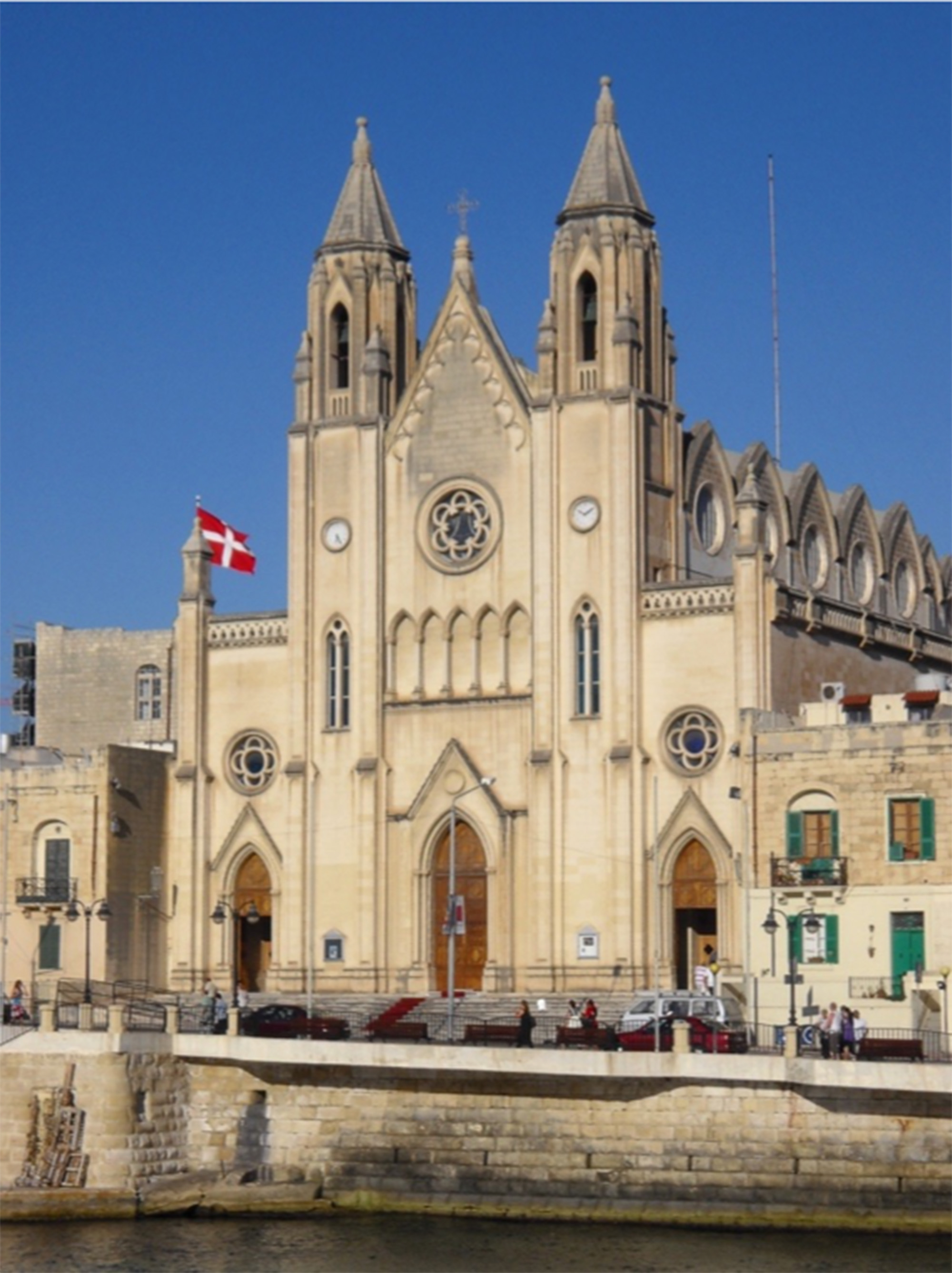
Our Parish: The Our Lady of Mount Carmel Church
Iconically standing at the edge of Balluta Bay, the gothic-styled church dedicated to Our Lady of Mount Carmel was built by the Confraternity dedicated to the same patron saint back in 1859.
The church was eventually rebuilt in 1877 and handed over to the Carmelite friars who restored the church in 1900. In 1958, the church was rebuilt one final time and handed over the title of parish church from its smaller counterpart, Lapsi Church.
